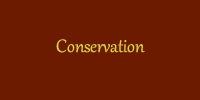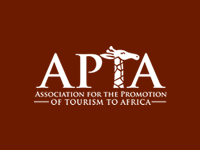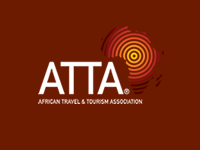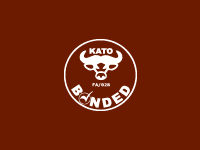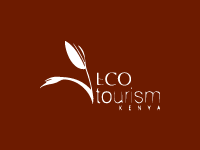Conservation
Showing what is possible when a community stands united for conservation – and highlighting the power of a grassroot movement that’s become a blueprint in the region as well as worldwide – Namunyak’s story of wildlife restoration is one of overcoming hardships to protect a rare and remote natural legacy.
A few decades ago, the Mathews Mountain Range was renowned for its wealth of elephants and rhino, before numbers started dwindling dramatically. And increasing international demand for ivory and rhino horn and external poaching posed a tremendous threat country-wide, and without protection, the populations of many species plummeted within 20 years. This included 15,000 elephants that used to roam the area freely dropping to only around 400.
As a knock-on effect, the area’s ecosystem suffered significant damage. With no keystone species to bulk browse the vegetation, rolling grasslands soon turned into woodlands. The lack of grass left the area devoid of wildlife – and also made the land less productive for the indigenous Samburu and their livestock.
A critical juncture was reached by the 90s, with many species at the brink. Fortuitously, the community conservation movement was gaining significant momentum at the same time – with a growing awareness of conservation’s immense potential to improve livelihoods as well as the land.
Namunyak Community Conservancy was established in 1995 by the local Samburu community – and founded on the vision and insights of their Elders, who travelled far and wide to learn more about community-driven conservation that would safeguard both their natural legacy and people for generations to come. Committed to the future of Namunyak’s community, wildlife, and biodiversity, they made sure their plans benefitted the region as a whole.
Labour of Love
In a landscape so remote and exposed to nature’s ebbs and flows, it was everything but easy to break ground in those early days. Everything had to be done from the ground up – including building the area’s first roads and creating infrastructure from scratch. Added to that, all of this was done at a time at a time when El Niño was wreaking havoc throughout East Africa – inflicting serious damage while disrupting distribution and construction work.
Despite many unforeseen challenges, Namunyak Community Conservancy turned into a reality –thanks to an unwavering passion and commitment to bring it to life. With the community assuming responsibility for its regeneration, the land became visibly healthier and the area more stable – and soon, the ecosystem started changing again.
It was a watershed moment. Elephants started returning to the now secure and protected Sarara Valley, browsing the bush back and opening up waterholes and grasslands too. As a result, a diversity of wildlife followed, and the community in turn started benefitting from healthier pastures and water sources for their livestock, as well as steady tourism revenue through Sarara’s guests.
Today, this remote wilderness is sought out by those who long to be immersed in a rare natural legacy – and this cherished landscape is once again thriving and whole.
“It’s an inspiring testimony to the Samburu community’s conservation efforts that Namunyak Conservancy has overseen the return of a free-ranging population of almost 6,000 elephants to the Mathews Range – and also protects one of the largest herds of Reticulated giraffe in Africa.”
Over time, the conservancy became a beacon of light in community conservation on the continent – and around the globe. Highlights include:
It’s a sanctuary for Kenya’s second-largest elephant population, one of Kenya’s largest populations of the endangered Reticulated giraffe, the endangered Grévy’s Zebra, hyena, kudu, lion, mantled guereza (Colobus) monkeys, leopard, and more. It’s also home to a wide array of endemic and migratory birds – including Egyptian Vultures and several birds of prey.
Namunyak receives many requests from neighbouring conservancies for support, and is used as a key learning point. It’s become a hub for communities from all over who come here to learn. This includes delegations from Tanzania, Uganda, South Sudan, Rwanda and Ethiopia.
The Sarara Foundation pioneered a nomadic Montessori Education system – which is fully accredited by the Association Montessori Internationale; a highly impactful mobile health clinic; a dedicated Eco Ranger unit doing invaluable work in rangeland restoration; and the burgeoning Milk to Market program – which provides more than 1,200 Samburu women with gainful employment for the very first time.
Reteti Elephant Sanctuary, which demonstrates the immense impact of community-based conservation on the ground. The sanctuary was established in response to urgent calls from the Samburu community – a community that has taken the lead in rescuing, rehabilitating, and releasing elephants within their home range. Promoting the preservation of natural resources to create stability, employment, and revenue, Reteti is designed to rescue and release orphaned and abandoned elephant calves, while creating much-needed benefits for the people who share this landscape with Kenya’s wild elephant herds. It’s the story of a community standing united for wildlife, and of a community’s voice being heard.
“Sarara believes conservation is as much about people as it is about wildlife. In a world where climate change is placing ever more pressure on Indigenous People and communities who rely on healthy landscapes to thrive, its core goals have never been more important. To protect and grow biodiversity, Sarara supports locally-led, grassroots programs to improve livelihoods and build a flourishing community.”
“Our goal is to inspire a global community of conservationists to help us create long term sustainability for Kenya’s magnificent cultural and natural heritage. At Sarara, our flagship blend of experiential travel, Conservation and Community offers a truly unique and immersive experience that gives back to the people and the land that need it the most.”







